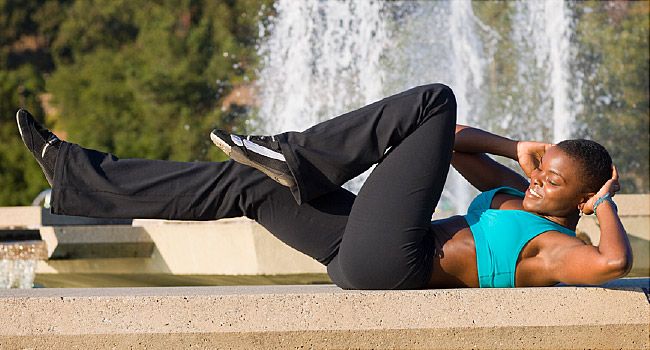Scoliosis? Strengthened or insufficient lordosis? Osteochondrosis? Hernia? Do not care, do the exercise, it will pass by itself)))
In my previous article, I wrote about violations of posture and how they can be identified. This article will tell you what can happen if you neglect the already impaired posture in the training process, as well as which exercises should not be done with various violations, and which, on the contrary, can be corrected or prevented.
Reinforced lordosis is an imbalance of antagonist muscles such as the abs and the long extensor of the spine. In this case, the muscles of the lower back are in hypertonicity. Our joints do not have their own vessels that supply nutrients. Joint nutrition is diffuse, that is, through nearby vessels.
Since muscle tissue is overstrained — the functioning of blood vessels and nutrition is impaired. When performing exercises involving the long extensor of the spine, the tension on these muscles will increase, which oxymetholone italia can lead first to osteochondrosis, and then to a hernia.
:max_bytes(150000):strip_icc()/Depositphotos_69280161_l-20151-56f1e7c73df78ce5f83ca3af.jpg)
Osteochondrosis — the destruction of the intervertebral discs, which is a consequence of disturbances in posture, a violation of mineral metabolism. The next stage is an intervertebral hernia. This can be avoided with simple exercises.
As experience shows, along with reinforced lordosis, there is mainly an imbalance in the quadriceps / posterior thigh. In this case, using the wrong exercises, or using a traumatic technique, you can also get a knee injury.
Exercises that can not be used with enhanced lordosis:
1. Compression exercises (with back weights that put pressure on the spine, such as squats, both with free weights and in the simulator).
2. Exercises that use the lower back muscles as a stabilizer (such as Romanian deadlift, deadlift, torsion weights), army bench press, dumbbell bench press, barbell pull to the chin, weightlifting exercises like a jerk, push.
3. Leg extensions in the simulator, leg press (we work and so on overstressed quadriceps overstressing them even more).
How to fix this violation? Very simple — we stretch overstressed muscles, strengthen weakened ones.
Correction exercises: lunges (although they include the muscles of the lower back as a stabilizer, they simultaneously stretch the quadriceps and strengthen the biceps of the thigh), flexion of the legs in the simulator lying down (to strengthen the biceps of the thigh), active hyperextension (stretches the long extensor of the spine). The complex for stretching the long extensor of the spine, see my video.
With insufficient lordosis, we have the opposite picture — the long extensor of the spine is in hypotension and needs to be strengthened. What can we get by neglecting warnings? The same hernia, the same knee injury. As a rule, with insufficient lordosis, the posterior surface of the thigh is also inflamed (overstressed), and the quadriceps is vice versa.
Exercises not recommended for use:
Squats with free weights (since a person with this disorder will have a rounded back during squats, which can lead to a hernia), deadlift (for the same reason), lunges (at the same time we load an already tense muscle, and weakened — we stretch), bending the legs lying down (and so we strain a tense muscle).
How to fix? We fix everything the same way — weakened muscle needs to be strengthened, and the inflamed one should be stretched.
Exercises: leg extension in the simulator sitting (strengthening the quadriceps), squats in the hook (strengthening the quadriceps), leg press (strengthening the quadriceps), Romanian or deadlift (stretching the back of the thigh and strengthening the long extensor of the spine), passive hyperextension (stretching the back of the thigh and strengthening the long extensor of the spine).
Stoop (chest kyphosis). The reason for stoop is in most cases incorrect posture in everyday life and during work. Also, the cause of the stoop may be the previous scoliosis.

In this case, the pectoral and anterior deltoid muscles are in hypertonicity, and such muscles as the broadest, largest round, rhomboid, trapezoid (middle part) and posterior deltoid muscles are weakened. Small stabilizers are also weakened — cuffs of rotators of the shoulder joint (small rhomboid, axial, supraspinatus, subscapularis).
For this type of violation, do not strain the pectoral muscles even more, worsening posture, as this can flow into cervical or thoracic osteochondrosis, well, then you understand)
For the chest, do not use more than 2 exercises at least three to four weeks, until you see a noticeable improvement in posture.
What exercises are worth using? We strengthen the back vertically (pull-ups on the bar or in the gravitron, pull of the vertical block, vertical pull in the lever simulator) and horizontal (pull of the bar or dumbbells in the slope to the belt, pull of the horizontal block, pull in the tilt of the lower block in the crossover, pull of the dumbbells lying on the bench at an angle of 45 В°).
Also, for all types of disorders, stretching of a stretching character to inflamed muscles will be useful.
The following article will be useful to those who save their time. This information will allow everyone who is able to devote at least 30 minutes to training to train!
Read our articles and develop with us, improving the quality of your workouts and the quality of life in general!